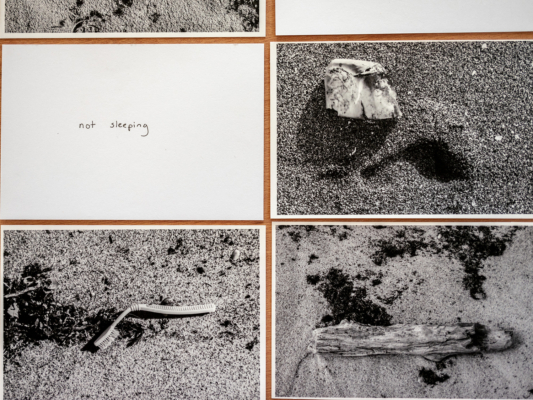
More Collaborations
Walking the Wrackline
Matt Roberts & Terri Witek
Between January and August 2018, new media artist Matt Roberts and poet Terri Witek traversed Canaveral National Seashore from the north boundary at Apollo Beach (New Smyrna) to the southern boundary at Playalinda Beach (Titusville). Their wanderings covered 24 miles of shoreline and an ever-changing wrack line. Roberts translated their experiences via video and still photography; Witek used text and voice: their collaborative show combines image, text, and sound in a site-specific installation at Canaveral’s historic Shultz-Leeper house (formally owned by artist Doris Leeper). Walking the Wrack Line is a cooperative venture: between Canaveral National Seashore, and Stetson University’s Institute for Water and Environmental Resilience, whose grant funded the project.
In environmental terms, Walking the Wrack Line considers the interspecies entanglements we witnessed as both highly problematic and rich in possibilities. Philosophically, the wrack line reads like a long, connected treatise on both beauty and danger. As Dr. Wendy Anderson reminds us: “At a certain size, plastic and silica glint the same.” “Until you eat it,” adds Laura Henning, Chief of Interpretation and Visitor Service for Canaveral, pointing out how ocean and land continue both to toxify and sustain each other. As a visible reminder of how species interact, the wrack line has become, it seems to Roberts and Witek now, an EKG of our time on the planet.











